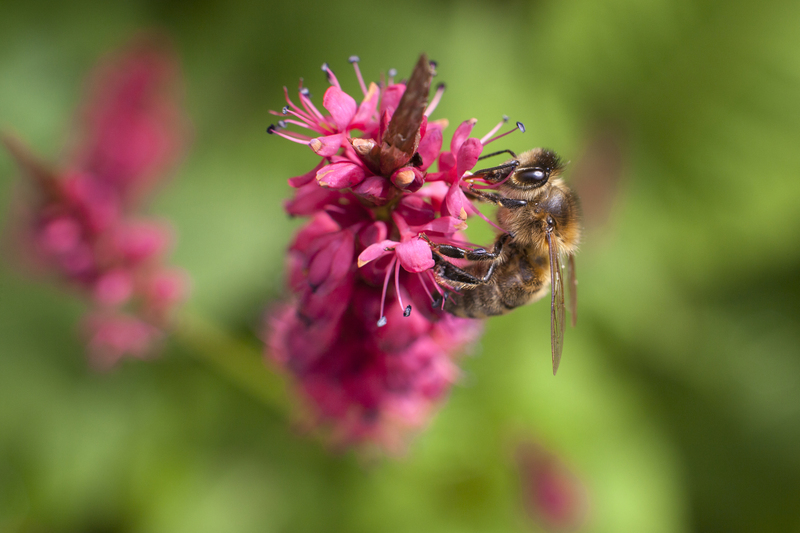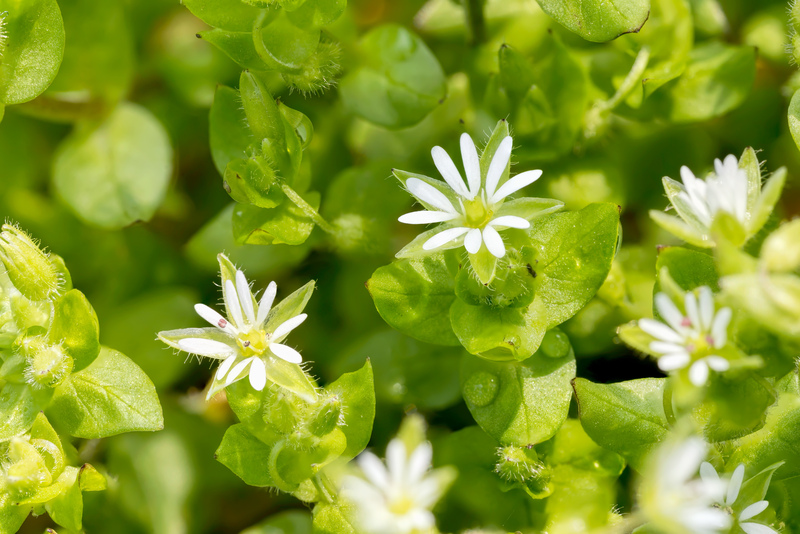Harmonizing Horticulture with Dog-Friendly Spaces
Posted on 03/09/2025
Harmonizing Horticulture with Dog-Friendly Spaces: A Comprehensive Guide
Are you a passionate gardener and a devoted dog owner? If so, you may have faced the age-old challenge: How can you create a vibrant, thriving garden without compromising the safety and happiness of your four-legged friends? Harmonizing horticulture with dog-friendly spaces is both a science and an art, requiring thoughtful planning, plant selection, and a deep understanding of your dog's behavior. This comprehensive guide will walk you through every aspect of designing a garden that's beautiful and canine-approved, ensuring both your blooms and your best bud can flourish together.
Why Combine Horticulture and Dog-Friendly Design?
Modern homeowners increasingly seek to maximize the functionality of their outdoor spaces. For dog owners, the garden is not just a visual retreat -- it's play territory, a training ground, and a source of comfort. Yet, without strategic planning, pets can trample delicate flowers, dig up newly planted beds, or even ingest toxic plants. By pursuing harmonious garden design that respects both nature's beauty and the needs of canine companions, you ensure a sanctuary for dogs and plants alike.
- Enhanced wellbeing for you and your pet.
- Maximum use of space, balancing form and function.
- Reduced risk of pet poisoning from toxic plants.
- Minimization of garden damage due to dog activity.

Key Considerations for Dog-Friendly Gardens
Creating a synergy between horticulture and canine needs starts with a few foundational principles. Here's what to keep in mind as you plan your dog-friendly garden:
1. Understanding Your Dog's Habits
Every dog has its preferences--some love to dig, others sprint laps, and a few may nibble on anything green. Observe your dog's routine before diving into garden design. Note their favorite sunbathing spots, toilet corners, and play paths. This insight is invaluable for optimizing the layout of your pet-safe landscape.
2. Select Dog-Safe Plants
Plant selection can make or break harmonious coexistence. Certain common garden plants are highly toxic to dogs, while others are safe and sturdy enough to withstand curious paws. Refer to reputable sources like the ASPCA's plant database to confirm plant safety.
3. Fence and Border Design
A secure perimeter is essential for both plant protection and pet safety. Solid fences, invisible barriers (like prickly hedges), and clever landscaping can define play areas and keep dogs from exploring off-limits garden beds.
4. Durable, Non-Toxic Materials
When creating pathways, play areas, or raised beds, always use dog-friendly materials. Avoid cocoa mulch and sharp gravel; opt for smooth stones, untreated wood, and robust paving that won't harm paws or leach toxins.
Best Dog-Friendly Plants: Safe Options for Lush Gardens
Striking the right balance means filling your garden with non-toxic, resilient plants that create a botanical sanctuary without posing a threat. Here are some of the top choices for pets and plants symbiosis:
- Sunflowers - Hardy and non-toxic; seeds loved by birds, too.
- Rosemary - Aromatic, edible, and tough.
- Marigolds - Bright annuals, not only safe but help deter pests.
- Camellias - Showy flowers, dog-friendly, and low maintenance.
- Snapdragons - Cheerful colors and generally safe for pets.
- Fuchsias - Non-toxic, trailing blooms.
- Ornamental grasses - Create texture and withstand rough play.
- Basil, thyme, and sage - Edible, aromatic, dog-safe herbs.
*Always check specific cultivars and regional guides, as plant safety can vary.
Plants to Avoid: Common Hazards for Dogs
- Azaleas/Rhododendrons - Highly toxic, causing severe symptoms.
- Foxglove - Dangerous cardiac toxins.
- Daffodils, tulips, lilies - Bulbs can be deadly if ingested.
- Sago palm - One of the most lethal pet hazards.
- Oleander - Every part of the plant is poisonous.
When in doubt, always research before planting something new.
Garden Design: Layouts that Suit Canine and Horticultural Needs
The heart of harmonizing horticulture with dog-friendly spaces lies in smart design. Here's how to set up your garden for peaceful coexistence:
1. Pathways and Play Zones
Dogs are creatures of habit--given the chance, they will create their own "dog runs" through your garden. Anticipate favorite routes and formalize them with sturdy, paw-safe paths using:
- Flagstone or brick pavers
- Pea gravel or decomposed granite (ensure it doesn't stick to paws)
- Bark chips or mulch made from pine or cedar
Create curves and gentle swerves; straight tracks can visually divide the garden and lose their charm. Surround the main play zone with resilient grass or artificial turf for year-round green.
2. Toilet Spots and Digging Corners
Train your pet to use dedicated toilet zones. Cover these with easy-to-clean substrates (like gravel or sand) and plant subtle aromatic barriers (lavender, rosemary) to mask scents. For enthusiastic diggers, create "legal" digging pits filled with loose soil; bury a few toys to encourage use.
3. Shade and Shelter
Cater to your dog's comfort with shaded nooks under small trees or pergolas. Non-toxic plantings like dogwood or crepe myrtle provide dappled shade. Safe shrubs can double as privacy screens.
4. Raised Beds and Borders
Protect prized blooms with raised beds and sturdy edging. Materials like brick or stone are both durable and safe for pets. As a bonus, raised beds simplify weeding and watering!
Harmonizing Activities: Enrichment for Dogs and Gardeners
A truly dog-friendly garden is not only about plant safety--it's about enrichment. Create an environment where humans and pups can bond and thrive:
- Obstacle courses: Simple jumps, tunnels, or agility basics offer physical and mental stimulation.
- Water features: Shallow fountains or splash pads provide cooling play on hot days. Always keep safety in mind.
- Herb gardens: Include dog-safe plants for sensory exploration and homemade pet treats.
- Bury-and-find games: Designated digging zones let dogs enjoy natural instincts without harming plantings.
- Bird and butterfly gardens: Install feeders and pollinator-friendly flowers in off-limits spots for added intrigue.
Practical Maintenance Tips for Dog-Proof Gardening
Ensuring harmony in a garden shared with dogs means ongoing care and vigilance. Maintain both lush greenery and pet safety with these expert tips:
- Mulch mindfully: Stick to pine, cedar, or untreated wood shavings. Avoid cocoa mulch entirely--it's toxic to dogs.
- Keep tools safe: Store garden tools and fertilizers out of reach.
- Monitor plant health: Remove fallen berries, leaves, or petals promptly (especially from unknown species).
- Fence vegetable patches: Vegetables and herbs are healthy, but some (like onions and garlic) are risky for pets if ingested.
- Train and reward: Use positive reinforcement to guide dogs away from sensitive areas.
- Inspect regularly: Check fences and garden structures for gaps or hazards.
Horticultural Solutions for Common Dog Problems
Trampled Plants
Select tough groundcovers or border plants like Irish moss, creeping thyme, or mondo grass. These bounce back easily from foot traffic.
Digging Damage
Distract diggers with a designated sand or soil pit. Place attractive logs or rocks over especially sensitive garden beds for added deterrence.
Urine Burn
Dog urine can spot or kill lawn patches. Counteract it by:
- Using resistant turf varieties (e.g., fescue blends)
- Encouraging dogs to use mulched or gravel toilet areas
- Watering areas after use to dilute urea concentration
Chewing and Nibbling
Plant robust, non-toxic species. Apply safe, bitter pet deterrent sprays if needed on high-risk areas.
Sustainable Gardening for Eco-Friendly, Dog-Safe Spaces
You can create an environmentally responsible garden that's also a pet paradise. Here's how:
- Compost safely: Avoid composting animal waste, which can harbor pathogens. Use only plant debris.
- Native plants: Select species adapted to your region. They're hardier, require less water, and support local wildlife.
- Water-wise practices: Use mulch and drip irrigation. Dogs and droughts can both stress lawns, so xeriscaping is a win-win.
- Avoid chemical fertilizers and pesticides: Opt for organic solutions like neem oil or ladybug releases.
Sustainability benefits everyone in the family, including your beloved pup.

Case Studies: Successful Dog-Friendly Gardens
Many homeowners have mastered harmonizing horticulture with dog-safe landscaping. Consider these inspiring examples:
- Backyard agility meadows: Combining native meadow wildflowers with a winding dog track for exercise and pollinator support.
- Enclosed vegetable gardens: Raised, netted beds protect produce while dogs romp on tough, evergreen groundcovers.
- Multi-zone retreat: Owners split spaces into ornamental, play, and relaxation zones--each catering to both human and canine needs.
Conclusion: Achieving Harmony Between Horticulture and Dogs
Harmonizing horticulture with dog-friendly spaces is entirely possible--and deeply rewarding. With patient planning, thoughtful plant selection, and creative design, you can cultivate a garden sanctuary where both plants and pups thrive. Let your outdoor space become a testament to the joyful coexistence of nature and nurture.
Remember, every garden is unique--customize your landscape to suit your dog's personality and your horticultural aspirations. Start small, monitor what works, and keep your commitment to both safety and aesthetics at heart. With the right approach, your backyard can become a harmonious oasis for every member of the family--paws included!
Ready to start your own dog-friendly gardening adventure?
- Assess your space and observe your dog's habits
- Choose non-toxic, durable plants
- Designate special zones for play, potty, and digging
- Maintain with pet safety in mind
For more tips on harmonizing horticulture with pet-safe garden design, bookmark this guide and share it with fellow dog lovers and garden enthusiasts!



